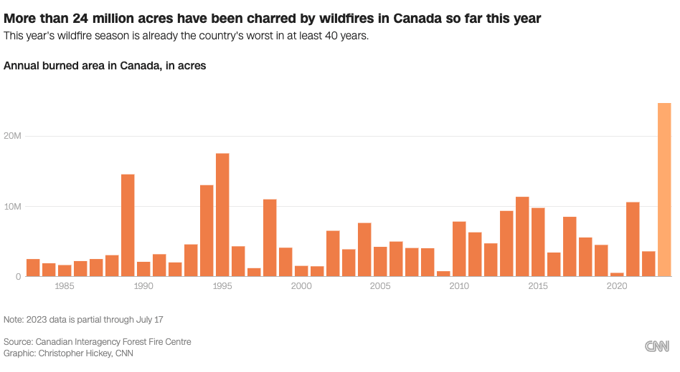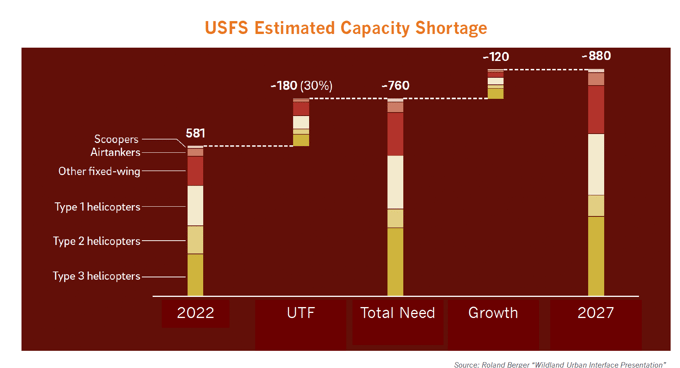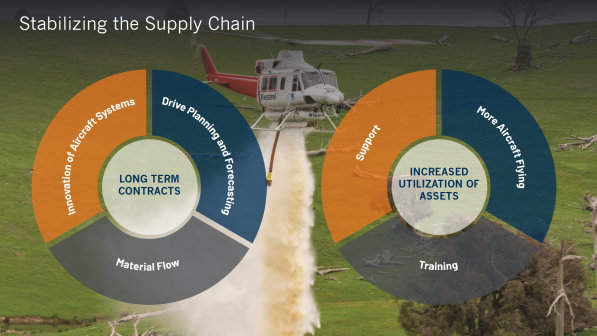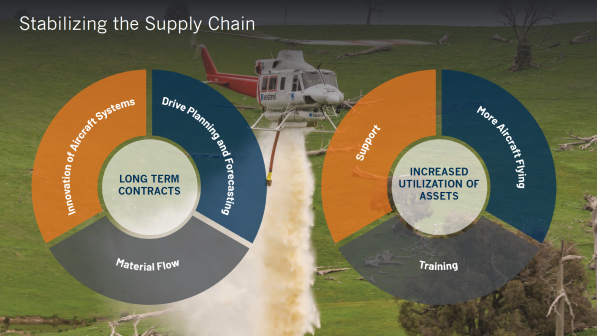The Tension in Aerial Firefighting Supply and Demand due to COVID-19 and Wildfires:
The global aerial firefighting community is navigating an unparalleled storm of challenges. The increasing frequency and intensity of wildfires, particularly in North America and Australia, have surged the demand for specialised aircraft and resources. At the same time, the COVID-19 pandemic has thrown an unexpected wrench into supply chain operations, resulting in restricted movement, limited resources, and severe delays. The situation has created a significant tension between the growing need for aerial firefighting and the ability to provide and maintain essential services. The struggles faced by authorities to manage this complex situation underscore the urgent need for innovation and collaboration.

According to a recent EY survey of 200 global senior supply chain professionals, only 2% of companies who responded to the survey said they were fully prepared for the pandemic. Serious disruptions affected 57%, with 72% reporting a negative effect (17% reported a significant negative effect, and 55% mostly negative). COVID-19 further complicated the supply chain required for managing wildfires, from the procurement of firefighting equipment to the distribution of essential supplies. Restrictions in travel, quarantine protocols, and social distancing measures have disrupted the fluidity of the supply chain.

The availability of necessary capacity for aerial firefighting, for instance, has been impacted, and the effects have resonated across the entire system. These disruptions illustrate the interconnected nature of crises like a pandemic and environmental disasters, highlighting the importance of resilience and adaptability in the face of multifaceted challenges.
According to industry experts Ray and Barry, overcoming the risks posed by supply chain challenges in the aviation industry necessitates the following key strategies:
Enhanced Collaboration
In the face of rapidly evolving challenges, a unified approach has proven crucial. Through proactive engagement, cross-border collaborations, and combined efforts to secure assets before fire seasons, new ways of working together have been found. This includes cooperation between governmental bodies, technology startups, and aviation companies. These efforts have become essential in combating longer fire seasons and strained resources. An example used by the presenters is the use of longer contracts between federal and state agencies and the operators. The longer contracts give operators more certainty to resource plan accordingly for to ensure capacity and assets for upcoming fire seasons.
Utilising Modern Technologies
Increased innovation adoption can alleviate supply chain issues:
- Efficiency: Technology increases efficiency both in the field and operationally, including predictive modeling for proactive fire management and real-time tracking for coordinated aerial responses.
- Innovation of Aerial Systems: Drones and advanced aircraft with thermal imaging and advanced water dispersal systems play a significant role in firefighting and can assist in helping to alleviate capacity constraints.
- Refurbishment: The refurbishing of older parts and aircraft helps relieve supply chain pressure, with industry expert Barry Kohler citing this as a contributing factor.
Training and Adaptation
Training has emerged as another solution, particularly in the Australian aviation industry:
- Pilot Development: Ray Cronin, a veteran in the field, emphasises increasing the pipeline of pilots, drawing on his company's history as the first to provide large-scale training for overseas students.
- Integration: Collaborative programs between traditional firefighters and modern tech teams lead to the integration of new tools, resulting in a more resilient and adaptive approach to wildfires.

Conclusion
The dynamic landscape of aerial firefighting is faced with unprecedented challenges as it grapples with more fires, extended fire seasons, and an increasingly competitive demand for resources globally. Simultaneously, the COVID-19 pandemic has strained the supply chain, resulting in fewer parts, pilots, and aircraft being available. The confluence of these factors emphasises the need for heightened organisation, efficiency, and collaboration.
In response, the industry is turning to innovative solutions to mitigate these challenges. Enhanced collaboration between governmental bodies, technology startups, aviation companies, and global operators is forging new pathways for sharing knowledge, resources, and cutting-edge technologies. This is being coupled with the adoption of modern technologies, such as drones, real-time tracking, and predictive modelling, to increase efficiency and effectiveness in the field. Additionally, focused training programs are bridging the gap between traditional firefighting practices and modern technological advancements, creating a more resilient and adaptive approach to tackling wildfires.
As the global community continues to navigate the complexities of the current environment, the lessons drawn from experts like Ray Cronin and Barry Kohler point to a future where aerial firefighting can evolve to meet these challenges. The intersection of collaboration, technology, and adaptability serves as a beacon of hope, providing a roadmap to not only confront the existing problems but also build a more robust and agile system for the future. The increasing pressure on supply chains, accelerated by global events, demands that the aerial firefighting community innovates and adapts to secure a safer and more effective response to the global wildfire crisis.
